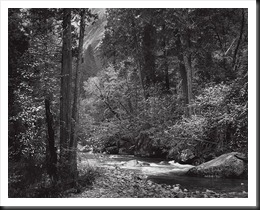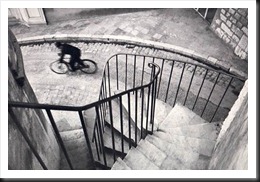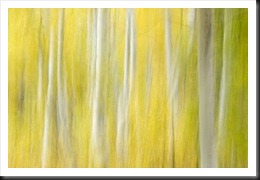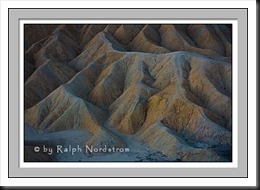“Did you manipulate your photograph?” “Did you use a filter?” “Do you use a Mac?” “Do you crop your images?” “I’ll have a nicer day than you; I’m not shooting a Canon.” Yes, someone actually said that to me at Bridal Vale Falls in the Columbia River Gorge of Oregon in response to my cheery, “Have a nice day.” I guess when you take the entire population of photographers you will always find those that are prejudiced and closed minded just like any other population. They think they are right and anyone that disagrees with them is wrong. It’s that simple.
The current issue of Lenswork magazine, the premier journal for black and white photography, has an article by guest contributor Jim Kasson titled “Previsualization in the Digital Age.” I couldn’t wait to read it. In my workshops and lectures I’ve always advocated that an artist interprets reality and communicates that interpretation through her or his art. In landscape photography I’ve encouraged our workshop attendees to leave their camera gear in the car until they connect with a location and only then set up their cameras to try to capture what is is they are experiencing. Previsualization, the anticipation of what the finished work will look like, is a big part of communicating what you are feeling.
In reading Ansel Adams’ fascinating book “Examples – The Making of 40 Photographs” in virtually every example he relates what he visualized and the techniques he employed to capture that. Adams was certainly one of the most prominent proponents of previsualization. In fact, he developed the Zone System so that he could have more control in capturing and reproducing the tonalities he visualized while in the field. Shooting a large format view camera, Adams was often severely limited in the number of sheets of film available to him on a shoot, especially if he had to lug his camera gear half way up Yosemite’s Half Dome or some other remote location. He had to get it right the first time.
In his article, Kasson, an active fine art photographer in the Carmel, California area, noted Henri Cartier-Bresson’s famous statement that encapsulated his work about looking for and finding the “decisive moment.” Kasson imagined, and certainly I did too, that Cartier-Bresson wandered the streets of Paris with camera at the ready and when he saw the decisive moment, captured it in a single shot. But when Kasson had the opportunity to view Cartier-Bresson’s contact sheets he saw that the “decisive moment” was not captured in a single frame. Rather, Cartier-Bresson worked a scene, often taken frame after frame, refining the composition or viewpoint, capturing many moments until all the elements came together in the “decisive moment.”
Kasson’s own work is characterized by a spontaneity and playfulness, an unpredictability that is the antithesis of previsualization. “I employ a photographic approach opposite previsualization. I actually want to be surprised…. I create photographic series that make surprises likely, even unavoidable. I love doing this.”
William Neill became a proponent of the ‘Impressionistic’ style of photography that is characterized by blurs that by their very nature are random and unpredictable, again, the antithesis of previsualization.
Not to place my own work on a par with these great artists but In my own experience I have often been surprised at what I discover in an image as I work on it, that the interpretation of the subject not only comes from what I experience in the field but also what happens in the ‘darkroom.’ With Lightroom, Photoshop and the other great tools available to us these days, the message communicated by the image can be the feelings I had in the field or something discovered later in the darkroom that may very well be a dramatic departure from the objective reality of the subject.
So where has this journey taken us and why did I choose the opening paragraph that I used? Starting with the second question, I chose the opening paragraph because so many artists and appreciators of art fall into a position that there is a right way and a wrong way to create art. You must previsualize. Previsualization is stifling and too constraining. You must frame the final image in the camera. You must do the final crop in Lightroom. You must get it on ‘film.’ You can always fix it in Photoshop. You must use a tripod. You must shoot hand held. HDR is evil. HDR is is a godsend. You must shoot a Nikon. You must shoot a Canon. You cannot create anything of value with a PC.
Adhering to one dogma can be stifling but not always. Adams was the master of previsualization and his works are not stifled or unexpressive. Cartier-Bresson was the master of the decisive moment and he worked hard to find them. Kasson’s and Neill’s works are imaginative, spontaneous and delightful. Each is inspirational and moving in its own way.
Back to the first question, “Where has this journey taken us?” I think there are several of lessons, the first and most important of which is…
Be open-minded Give yourself permission to experiment, to escape from what you may feel is expected of you. Embrace criticism. Embrace rejection. Embrace possibilities.
It’s OK to develop a personal style It’s OK to prefer one approach over another and to strive to master that approach. It’s OK to develop a creative vocabulary that makes it possible for you to express what it is you have to say. Discipline and skill are good thinks.
It’s OK to do crazy things It’s OK to try things outside the box of your personal style. It’s OK to be brash and foolish. It’s OK to fail. It’s OK to expand the way you see the world. And it’s OK to expand your creative vocabulary and your ability to express what you see and feel.
It’s OK to grow A personal style is not a static thing. As you grow, you discover more things to say and more ways of saying them, your personal style will evolve and grow.
Our art, photography, can be a rich and rewarding endeavor and an ever fascinating journey of self-discovery. Be open to the possibilities and hone your skills. Become really good at what you do best.
Join the conversation. Share your thoughts and experiences with us.
And if you find this article of interest, feel free to share it with others. Email it to a friend. Post it on Facebook. Twit it.
Join me on an upcoming workshop. Click here for more details.
To see more of my photographs click here.
(4526)






Thank you for a very refreshing article. I am an aspiring photographer and I am a fan of all type of photographic art. I aggree whole heartedly that one can do great things from whatever approach fits them as an artist. As I started in my artistic journey I read a lot about previsualization and I struggled because for one I am not at that level yet and I felt exactly how you described, constrained. I almost got suckered into believing this was th only approach in making a great photograph. This is certainly a perspective that is freeing. I do have great admiration for those that can previsualize though.
Nicely written, Ralph. With your guidance and using this approach to image making, I have seen a huge improvement not only in my finished images but also in the images straight out of the camera.